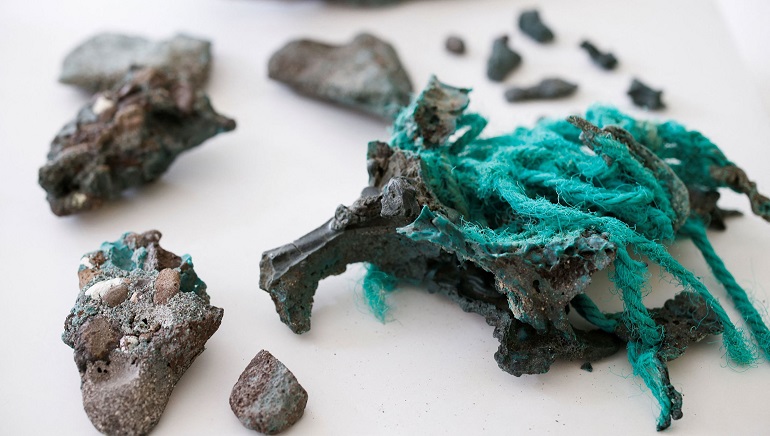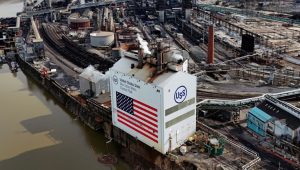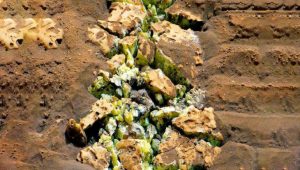A geologist of Federal University of Parana, Fernanda Avelar Santos and her team have discovered rocks made from plastic debris on Brazil’s Trindade island. Melted plastic has become intertwined with rocks on the island. “This is new and terrifying at the same time, because pollution has reached geology,” Santos said.
Trindade Island, a remote volcanic outcrop a three to four-day boat trip off the coast of Brazil, is best known as a nesting site for green turtles. On the island, the researchers have discovered a new kind of igneous rock, plastistone, formed almost completely from plastic.
Plastic rocks have been previously found in various parts of the world. Researchers documented plastiglomerates – rock, sand and other debris fused together by melted plastic – in Hawaii in 2014, and pyroplastics, rock-like pebbles formed out of burnt plastic, on the southwest coast of England in 2019.
Santos first found the plastic rocks in 2019, during her travel to Trindade Island to research a doctoral thesis on landslides, erosion and other “geological risks.” She was intrigued by the peculiar-looking blue-green rocks and took some back to her lab. On analysis, she and her team identified the specimens as the new kind of geological formation, merging the materials and processes the Earth has used to form rocks for billions of years with plastic trash. “It fits in with the idea of the Anthropocene, which scientists are talking about a lot these days: the geological era of human beings influencing the planet’s natural processes,” she said.















